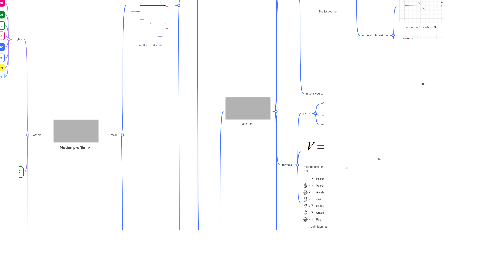
1. others
1.1. styles
1.1.1. bad
1.1.1.1. Very bad
1.1.2. good
1.1.2.1. very good
1.1.3. not as good
1.1.4. not as bad
1.1.5. important
1.1.5.1. Very important
1.1.6. semi important
1.1.7. warning
1.1.8. link
1.2. AUTHOR
1.2.1. Nima Shokouhfar
1.2.1.1. Linkedin
1.2.1.1.1. Follow me on LinkedIn to stay updated on my latest professional insights and tech projects!
1.2.1.2. Youtube
1.2.1.2.1. code with nima
1.2.1.2.2. ideariver
1.2.1.3. Medium
1.2.1.3.1. ✍️ Follow me on Medium to read my latest articles on tech, coding, and innovation!
1.2.1.4. Github
1.2.1.4.1. ⭐️ Give my projects a star on GitHub and explore my repositories to discover new tools and innovations!
1.2.1.4.2. 💖 Sponsor me on GitHub to support my open-source contributions and help me create even more useful projects!
1.2.1.5. upwork
1.2.1.5.1. 💼 Hire me on Upwork for freelance projects. Let’s work together to bring your tech ideas to life!
1.2.1.6. Patreon
1.2.1.6.1. https://www.patreon.com/c/CodewithNima
1.2.1.7. main website: ideariver.ca
1.2.1.7.1. 🚀 Visit IdeaRiver.ca for all my latest projects, blogs, and ways to connect!
1.3. Styling Version
1.3.1. 3.0.3
2. main
2.1. motion profile
2.1.1. types
2.1.1.1. Why motion profile?
2.1.1.1.1. example
2.1.1.2. type of motion profile
2.1.1.2.1. T-curve
2.1.1.2.2. T-curve with low pass filter
2.1.1.2.3. S-curve
2.1.1.2.4. sinusoidal curve
2.1.1.2.5. Higher order
2.1.1.2.6. higher order sinusoidal
2.1.1.3. T-Curve
2.1.1.3.1. Full profile
2.1.1.3.2. Triangle-drive
2.1.1.3.3. IF you have a choice between triangle drive and full profile which one should we choose?
2.1.1.3.4. equations
2.1.1.3.5. Voltage
2.1.1.4. T-curve with a low pass filter
2.1.1.4.1. this guys love to do this
2.1.1.4.2. architecture
2.1.1.4.3. filter
2.1.1.4.4. Yaskawa
2.1.1.4.5. bad
2.1.1.4.6. good
2.1.1.4.7. phase lag
2.1.1.5. S-Curve
2.1.1.5.1. Jerk
2.1.1.5.2. higher order
2.1.1.6. Sin Cos
2.1.1.6.1. first order
2.1.1.6.2. Sinosioidal higher order
2.1.2. Application of this for BD people
2.1.2.1. you have to know whic profile you support
2.1.2.2. if you support higher end profiles, that is a selling point
2.1.2.3. You have to know advantages and disadvantages of each profile
2.1.2.3.1. because you are the one who advise customer to use which profile
2.1.2.4. you have to know how to calculate t-curve for motor sizing application
2.2. Tips
2.2.1. Traingle profile vs a profile with constant speed
2.2.1.1. First, all the profiles ike S-curve, T-curve, sinusoidal can be both triangle drive or non-triangle drive
2.2.1.2. The only differenc is that in the full profile we limit the max velocity
2.2.1.2.1. example
2.2.2. If there is no limitation for speed always choose triangle profile over a profile with constant speed
2.2.2.1. Because
2.2.2.1.1. it is much harder to fight mass or inertia than fighting friction
2.2.2.1.2. You have a much better time during your settling if the acceleration is as low as possible
2.2.2.1.3. In other words, you want a wider graph than a shorter one with high acceleration
2.3. formula
2.3.1. x= 1/2 a t^2 + v0*t + x0
2.3.1.1. in constant speed
2.3.1.1.1. x= v *t
2.3.2. x= 1/24 s t^4= 1/6 J x t^3 + 1/2 a x t^2 + v0*t + x0
2.3.2.1. newton equation
2.3.3. F=ma
2.3.3.1. T=J alpha
2.3.3.1.1. J is inertia
2.3.3.1.2. alpha is angular acceleration
2.3.3.1.3. m is mass
2.3.3.1.4. a acceleration
2.3.4. F= kf x I
2.3.4.1. T= Kt x I
2.3.4.1.1. Kf= force constant
2.3.4.1.2. Kt = torque constant
2.3.4.1.3. F is force
2.3.4.1.4. T is torque
2.3.5. User inputs
2.3.5.1. limits
2.3.5.1.1. max velocity
2.3.5.1.2. max acceleation
2.3.5.1.3. max jerk
2.3.5.1.4. max snap
2.3.5.1.5. how much to move
2.3.5.2. example
2.3.5.2.1. buy a motor with this spec
2.3.5.2.2. movement example
2.3.5.3. Don't forget
2.3.5.3.1. most users has no idea what is motion profile
